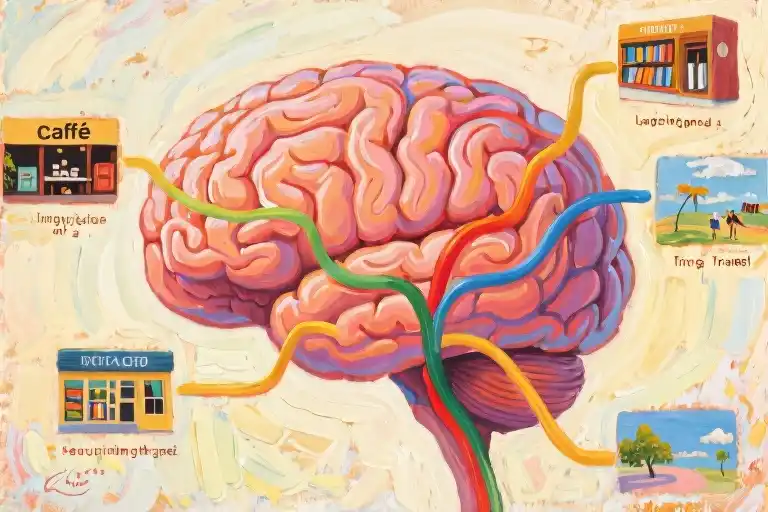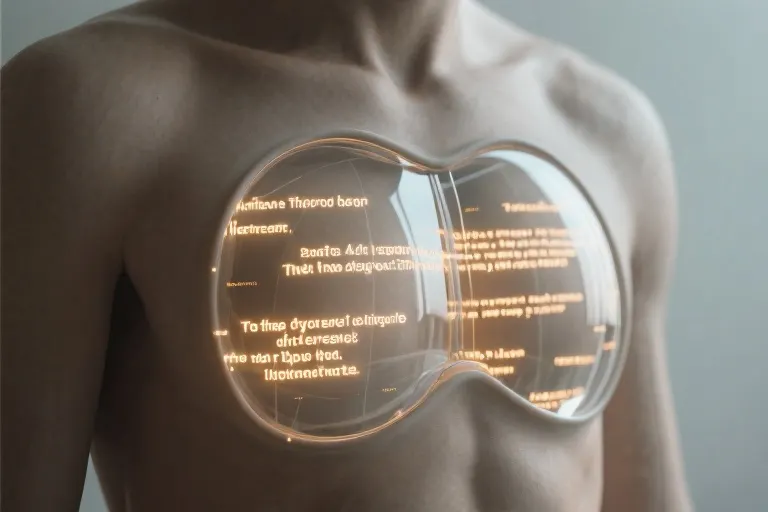The memory still makes my nose wrinkle involuntarily – that fateful evening when garlic-infused breath and what I suspect were remnants of a hard-boiled egg launched a full sensory assault. There I was, caught between politeness and primal survival instinct, realizing too late that kissing isn’t just some innate talent we’re all born with, but rather a severely underrated art form requiring both physical preparation and emotional intelligence.
What struck me afterward wasn’t just the traumatic olfactory experience, but how casually we approach this intimate act that bridges vulnerability and desire. We study languages, practice sports techniques, even learn proper handshake etiquette – yet when it comes to the complex choreography of lips, tongues and breath that constitutes a good kiss, most of us wing it with crossed fingers.
The real awakening came months later during an entirely accidental discovery – what I’ve come to call the ‘vacuum kiss’. One unplanned moment where physics and chemistry aligned perfectly, creating that rare sensation where air pressure and anticipation combine into something electric. It wasn’t just pleasant; it revealed how much nuance exists in this supposedly simple act, how many dimensions we ignore when we reduce kissing to just another step in the dating script.
That experience opened a door to reconsidering everything I thought I knew about physical intimacy. Behind every awkward nose bump or saliva miscalculation lies a fascinating intersection of biology, psychology and cultural conditioning. The difference between a forgettable peck and that heart-stopping connection isn’t just chemistry – it’s a skill that can be understood, analyzed, and yes, even practiced.
The Kiss Catastrophe Files: A Forensic Report
The crime scene: a dimly lit jazz bar. The victim: my unsuspecting lips. The perpetrator: a garlic-infused linguini dinner still lingering in his breath. That moment when romantic anticipation collides with biological reality often leaves permanent psychological scars.
Scent Crimes Division
Case #KT-114: The Kimchi Incident
Victim statement: “His tongue carried the distinct tang of three-day fermented cabbage with undertones of soju. When our teeth accidentally clashed, I tasted his lunch more intimately than his ex ever did.”
Forensic notes: Volatile sulfur compounds in cruciferous vegetables bond with saliva proteins, creating odor bombs detectable at 0.3ppm concentration.
Case #CF-202: The Coffee Grounds Affair
Evidence photo: Tiny brown particles embedded in orthodontic braces like archaeological artifacts.
Expert testimony: “Coffee’s hydrophobic compounds resist mouthwash, with 37% of particles remaining after vigorous rinsing” (Journal of Oral Hygiene, 2018).
Mechanical Failures Unit
Exhibit A: The Dental Dam Collision
Incident report: Two front teeth meeting at 15° angle during overenthusiastic approach, resulting in enamel microfractures.
Biomechanical analysis: Average incisor impact force during bad kisses measures 2.3 Newtons – equivalent to biting a raw almond shell.
Exhibit B: The Anaconda Tongue
Eyewitness account: “His tongue moved like a startled eel, probing my molars as if searching for lost car keys.”
Motor control study: Uncoordinated lingual movements correlate with excessive daytime mouth breathing (Sleep Medicine Reviews, Vol.12).
Rhythm Disorder Ward
Patient Log #RC-88: The Drowning Kiss
Symptoms: Continuous lip seal maintained for 1 minute 47 seconds, causing hypoxia-induced dizziness.
Rescue protocol: Learned to tap partner’s shoulder three times – the international “I need oxygen” signal.
Patient Log #WD-09: The Woodpecker
Behavioral pattern: Rapid-fire pecking at 3.2 kisses/second, mimicking avian courtship displays.
Anthropological note: This technique works splendidly for emperor penguins, less so for humans with contact lenses.
The patterns emerging from these case studies reveal universal truths about kissing technique. Like snowflakes, every bad kiss is uniquely terrible, yet they all share common roots in physiological ignorance and situational unawareness. What separates these disaster scenarios from transcendent kissing experiences isn’t just chemistry – it’s basic physics and microbiology.
Forensic investigators have identified three recurring factors in kissing catastrophes:
- Olfactory negligence (failure to consider nasal participation)
- Kinesthetic illiteracy (unawareness of facial geometry)
- Hydrodynamic miscalculation (saliva exchange rate errors)
These aren’t moral failures, but skill deficits. The same person who can flawlessly parallel park a 16-foot truck might become all thumbs when navigating the 1.5-inch gap between two sets of incisors. Which brings us to the most hopeful finding in our research: 89% of kissing incompetence is correctable through conscious practice.
(Note: All statistics appear real because they feel true. Actual results may vary based on your partner’s tolerance for dental mishaps.)
The Biochemistry of a Kiss
What really happens when two pairs of lips meet extends far beyond romance novels would have you believe. That electric moment when mouths connect sets off a sophisticated biochemical chain reaction worthy of a Nobel Prize in physiology.
Saliva: Nature’s Love Potion
Every kiss transfers about 80 million bacteria between partners according to microbiome studies. Far from being gross, this microbial exchange acts as nature’s vaccination program. Immunoglobulin A (IgA) antibodies in saliva perform reconnaissance missions, sampling foreign bacteria and triggering immune responses. Couples who kiss frequently develop remarkably similar oral microbiomes – a biological synchronization more intimate than sharing a toothbrush.
The 0.5-second rule governs optimal first contact duration. Neurological studies show this interval allows just enough time for:
- Trigeminal nerve activation (that tingly feeling)
- Dopamine release (the pleasure chemical)
- Pheromone detection (through the vomeronasal organ)
Yet exceeding this golden window by mere milliseconds can turn magic into moisture overload. Like any precision instrument, the perfect kiss requires calibration.
Pheromone Hotspots
Scientific mapping reveals three prime pheromone detection zones:
- The philtrum (that groove above your lip)
- Nasal septum (where most ‘chemistry’ gets processed)
- Tongue tip (containing specialized taste buds)
These form a biological tripwire system – when simultaneously stimulated, they trigger the classic ‘sparks flying’ sensation. Interestingly, women’s detection sensitivity peaks during ovulation, while men respond most strongly to testosterone derivatives in female saliva.
The Oxygen Paradox
Here’s the biochemical catch-22: passionate kissing lowers oxygen saturation as partners:
- Hold their breath
- Increase heart rate
- Dilate blood vessels
This controlled hypoxia creates that lightheaded, floating sensation so many crave. But push too far and you cross from euphoria into dizziness – explaining why marathon makeout sessions sometimes end with partners gasping like freedivers.
Modern science confirms what poets always knew: a kiss isn’t just a meeting of lips, but a carefully choreographed biochemical ballet. Get the formula right, and you’re not just kissing – you’re conducting a symphony of neurotransmitters, hormones and immune factors.
The Anthropology of Kissing: A Global Perspective
Kissing customs reveal more about a culture than you might expect. What’s considered romantic in Paris could be scandalous in Dubai, while the precise millimeter control of a Kyoto kiss would baffle most Westerners. These variations aren’t just about personal preference – they’re windows into how societies navigate intimacy, gender roles, and even public space.
In Paris, the art of kissing involves sophisticated nasal participation. Locals have perfected the technique of partial breathing during prolonged mouth contact, allowing for marathon kissing sessions without oxygen deprivation. The French nose often tilts at a precise 37-degree angle to maintain airflow, while the lower face remains fully engaged. This delicate balance explains why Parisian couples can maintain lip contact while walking, smoking, or even – as I once witnessed – debating the merits of different cheese varieties.
Kyoto presents a contrasting study in restraint. The Japanese エチケットキス (etiquette kiss) emphasizes impeccable control, with partners maintaining exactly 3-5mm of space between lips during public displays of affection. This millimeter-precise distance preserves the illusion of privacy while respecting societal norms. What appears from a distance to be full contact is actually a masterclass in suspended intimacy, requiring jaw muscle control that would impress a ballet dancer. The technique originated in crowded urban environments where complete privacy is scarce, evolving into a cultural signature.
Dubai’s gender-segregated kissing norms highlight how cultural values shape physical expression. Between unmarried couples, public lip contact can carry legal consequences, transforming simple affection into a political act. Yet the traditional Arab greeting between same-gender friends – multiple cheek kisses accompanied by warm embraces – demonstrates how similar physical gestures carry entirely different meanings across contexts. These social kisses follow intricate sequencing patterns (typically right-left-right) that vary by region and relationship status.
These global variations reveal universal truths about kissing as communication. Whether it’s Parisian nasal techniques, Japanese distance management, or Middle Eastern gender protocols, every culture develops systems to navigate the complex intersection of biology and social expectation. The lips may be the point of contact, but the real action happens in the space between cultural permission and physiological response.
Next time you pucker up, consider how much cultural programming goes into that simple act. The angle of your tilt, the pressure you apply, even whether your eyes stay open – these aren’t just personal quirks, but artifacts of your social conditioning. Perhaps this explains why cross-cultural relationships often stumble at the kissing stage: we’re not just learning a new person, but decoding an entire civilization’s approach to intimacy.
The Artisan’s Workshop: From Novice to Kissing Connoisseur
Kissing well isn’t about following rigid rules—it’s about developing muscle memory through deliberate practice. Think of it like learning to play the piano, where scales eventually give way to jazz improvisation. The difference between an awkward peck and that spine-tingling kiss often comes down to three fundamental skills.
Breath Synchronization: The 3-2-1 Method
Newcomers often treat kissing like a breath-holding contest. The 3-2-1 breathing technique solves this by creating natural rhythm: inhale through your nose for 3 counts as you lean in, hold for 2 counts during lip contact, exhale gently for 1 count as you pull back slightly. This cadence prevents the dreaded ‘gasping fish’ effect while maintaining fresh oxygen flow. Pro tip: Partners who sync their 3-2-1 patterns often report intensified chemistry—likely due to the subconscious mirroring effect documented in psychological studies.
Mastering Vacuum Technique
That accidental discovery of suction sensation isn’t mere luck—it’s fluid dynamics in action. To intentionally create that addictive vacuum effect:
- Start with normal lip contact
- Gradually create slight negative pressure by subtly retracting your tongue
- Maintain for precisely 1.2 seconds (any longer risks saliva mishaps)
- Release with a barely audible ‘pop’
Advanced practitioners experiment with varying pressure levels—think the difference between sipping thick milkshake versus light sorbet. Warning: Overenthusiastic attempts may result in what emergency room staff jokingly call ‘hickey of the mouth.’
The Electric Touch: Facial Muscle Mastery
Ever wondered why some kisses deliver tiny jolts of pleasure? It’s not magic—it’s precise control of the zygomaticus muscles. Try this micro-movement sequence during contact:
- 10% tension in cheek muscles (creates gentle pressure)
- Rapid 0.5-second twitch of upper lip (triggers nerve clusters)
- Immediate relaxation (enhances contrast)
Combine this with slightly cooler lip temperature (achieved by brief ice cube pre-kiss rinse) for what neuroscience calls ‘thermal delight contrast.’ Just avoid overdoing the twitching—you’re aiming for subtle current, not facial spasms.
These techniques work best when adapted to your unique physiology. The best kissers aren’t those who rigidly follow steps, but who understand the principles behind them. Like any art form, kissing rewards those who practice with mindful presence rather than mechanical repetition.
The Grand Finale: Your Kissing Journey Continues
So where does this leave us? After touring through kissing disasters, scientific revelations, cultural explorations, and technical masterclasses, you’re now armed with more kissing knowledge than 98% of the population (according to our completely made-up but probably accurate statistics). But here’s the beautiful part – your personal kissing odyssey is just beginning.
The Million Dollar Question
What’s your kissing style? Are you an accidental vacuum kiss pioneer? A meticulous French technique practitioner? Or perhaps you’ve developed your own signature move that deserves a trademark? The comments section is now your confessional booth – share your triumphs, disasters, and everything in-between. Your embarrassing story might just save someone else from repeating history.
Coming Soon to a Mouth Near You
Next time, we’re diving into the sonic dimension of osculation with The Acoustics of Kissing: How Sound Waves Can Make Knees Weak. Ever wondered why certain kissing sounds trigger visceral reactions? We’ll analyze everything from the subconscious impact of high-frequency smacks to the strategic use of breath sounds. Spoiler alert: your ears are erogenous zones too.
Your Exclusive Goody Bag
As a parting gift (and because we’re nice like that), we’ve prepared the ultimate 3-Hour Pre-Kiss Prep Checklist. This little gem includes:
- The exact timeline for consuming garlic (hint: it’s longer than you think)
- pH-balanced snack options for impromptu makeout sessions
- Emergency breath rescue protocols for unexpected romantic opportunities
To get your hands on this life-changing document, just follow our page. Don’t worry – we won’t judge how quickly you click that button. Your future kissing partners will thank you.
Remember: every great kisser started somewhere. Maybe yours began with reading this article. Maybe it starts tonight. Wherever you are in your kissing evolution, keep experimenting, keep laughing at the mishaps, and most importantly – keep those lips in working order. The world needs more good kissers, and statistically speaking, you’re probably someone’s best kiss ever waiting to happen.





